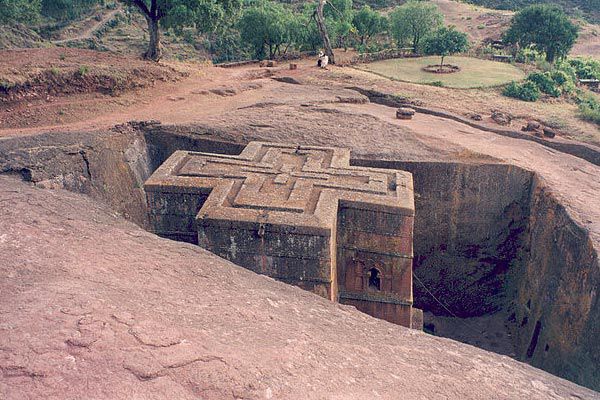
Concern grows over rock-hewn churches of Lalibela
Lalibela - Bet Giyorgis Church
UNESCO has expressed its concern about the expansion of the conflict in Ethiopia to the city of Lalibela, and how it could affect the rock-hewn churches of Lalibela, a World Heritage site since 1978.
Source: UNESCO and own elaboration. Image: Bet Giyorgis Church, Lalibela, Ethiopia. Photograph by Armin Hamm.
Built during the Zagüe Dynasty (1137 - 1270), the rock-hewn churches of Lalibela are a group of monolithic churches carved out of basalt rock near the town of Lalibela in Ethiopia. A World Heritage Site since 1978, they are divided into two main groups, plus the Bete Giyorgis Church, (Church of St George) possibly the best known of the whole complex, which is located to the west of the others.
In a public statement, UNESCO has declared that "Lalibela is a place of pilgrimage, devotion and peace: it should not be a place for instigating violence and conflict", and calls for the necessary measures to be taken to avoid damage to the churches, as well as to prevent any attempt of looting and pillaging.
Since November last year, northern Ethiopia has been suffering the effetcs of the Tigray War between the authorities of the Tigray region and the federal government of Ethiopia, which, as of this writing, is estimated to have resulted in hundreds of deaths and more than 50,000 refugees.
Read the full article

